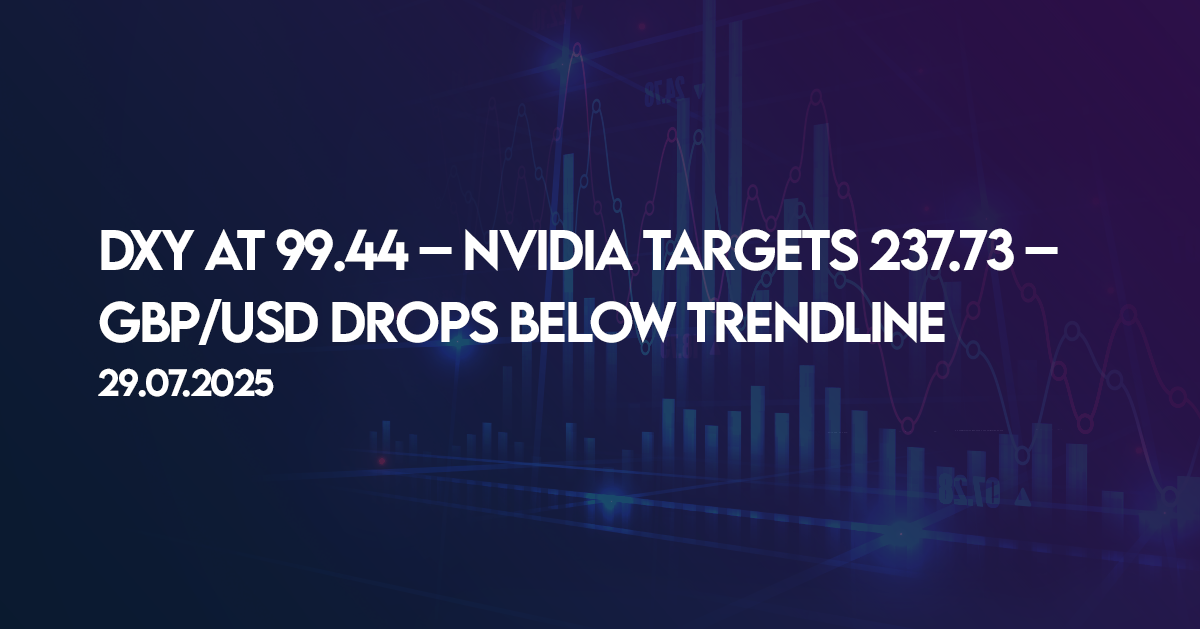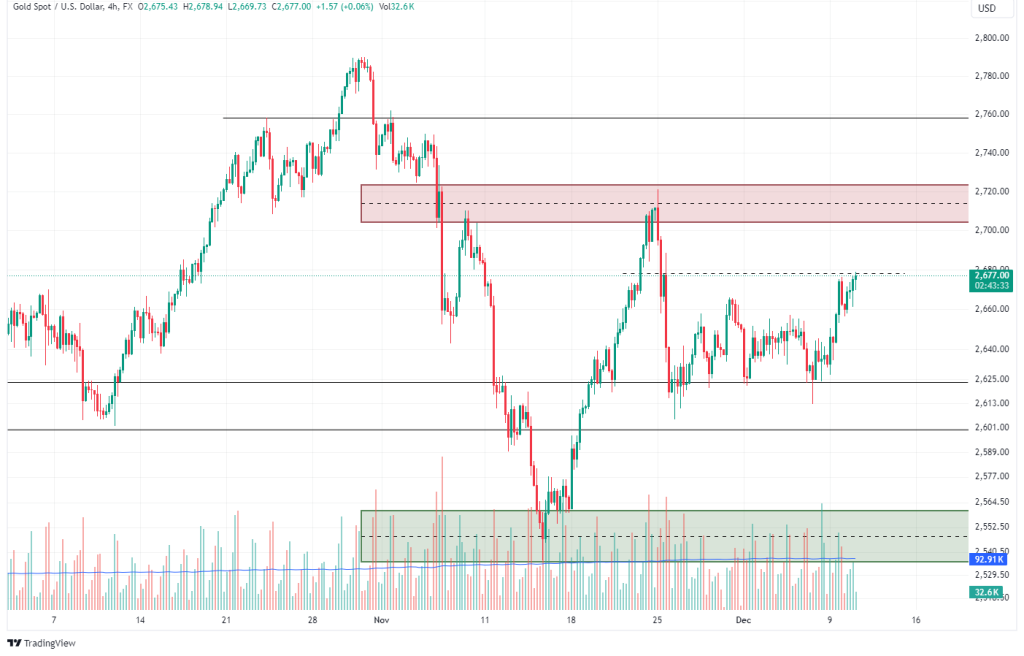
Technical Analysis 10.12.2024
XAUUSD
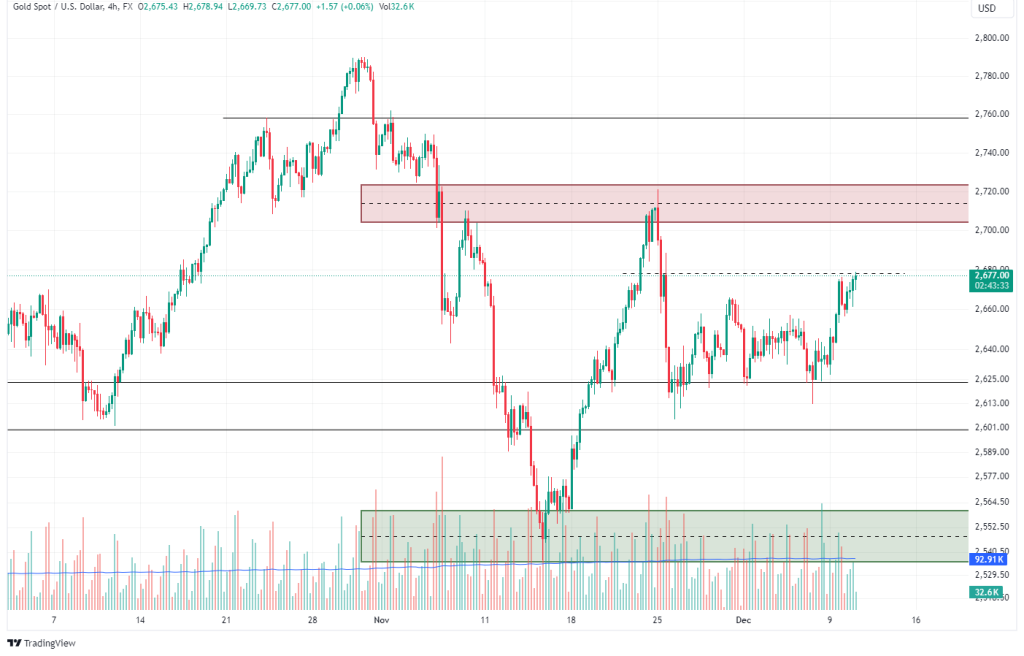
Gold has been trading in a horizontal range between $2,540 and $2,720, reflecting a consolidation phase in the market. Recently, after breaking above the $2,600 level, the price movement has further contracted, creating a narrower trading zone between $2,620 and $2,680. This tighter range highlights a buildup of pressure, which could result in a breakout or a breakdown in the near term.
Following a test of the upper boundary at $2,680, Gold faced selling pressure and retraced back to $2,660. However, it quickly rebounded, making another attempt to breach the $2,680 resistance level. If Gold successfully breaks above this level, the next target would likely be the critical resistance at $2,720. A move beyond $2,720 could signify a shift in market sentiment, potentially opening the door for further bullish momentum.
On the other hand, if the price fails to overcome $2,680 and encounters resistance once again, the support at $2,660 could weaken with repeated testing. A break below $2,660 would likely push Gold towards the lower support zone around $2,620, where buyers might step in. However, a sustained move below $2,620 could signal a deeper correction, challenging the broader bullish outlook. Traders and investors should monitor key levels closely, as the resolution of this consolidation phase will likely provide insights into Gold’s next directional move.
DXY
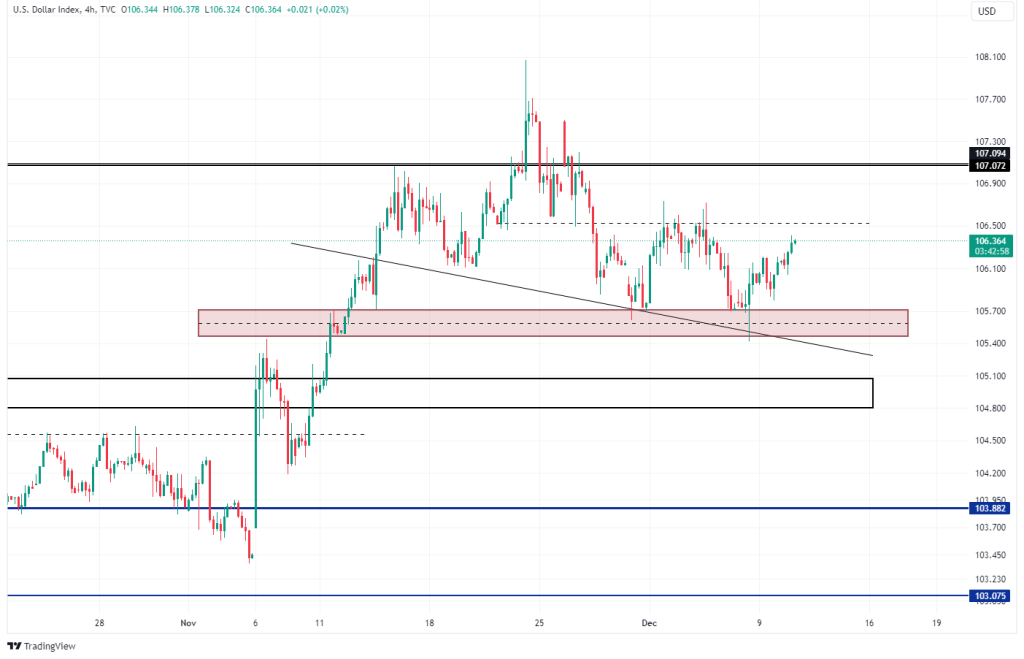
The U.S. Dollar Index (DXY) has recently exhibited a head-and-shoulders (H&S) pattern, a technical formation that often signals a potential bearish reversal. However, the DXY has maintained its support, particularly around the 105.8 level, which aligns with a significant horizontal support zone.
The nomination of Scott Bessent as the new Treasury Secretary has been perceived by markets as bearish for the dollar. Bessent, a Wall Street veteran and former chief investment officer for George Soros, is viewed as a stabilizing figure who may temper aggressive fiscal policies. This perception has led to a decline in U.S. Treasury yields, with the 10-year yield decreasing from 4.412% to 4.351% following the announcement.
Despite these developments, the DXY has not breached the critical support level at 105.8. After testing this level, the index rebounded, indicating that the support remains robust. This resilience suggests that, for the H&S pattern to confirm a bearish reversal, a decisive break below the 105.8 support is necessary. Until such a breakdown occurs, the dollar may continue to trade within its current range, with 105.8 serving as a pivotal support level.
In summary, while the formation of an H&S pattern and the appointment of a new Treasury Secretary have introduced bearish sentiments for the dollar, the steadfast support at 105.8 has thus far prevented a significant downturn. Market participants should closely monitor this support level, as its breach could signal a more pronounced bearish trend for the U.S. dollar.
BTC/USD
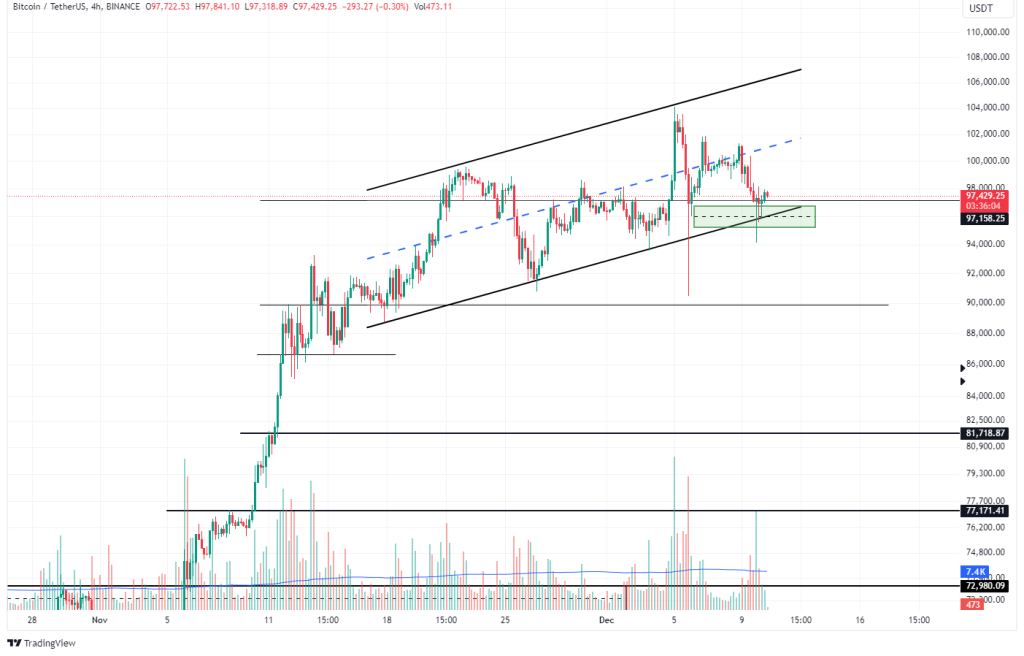
Bitcoin’s upward trajectory remains intact, with the cryptocurrency sustaining its position within the ascending channel despite recent market fluctuations. Following Monday’s sell-off, Bitcoin managed to hold above the $95,000 support level, indicating resilience in its current trend.
Two significant events are poised to influence Bitcoin’s near-term performance:
Microsoft Shareholder Vote (Today): Shareholders are set to vote on a proposal to incorporate Bitcoin into Microsoft’s corporate balance sheet. This initiative, if approved, could signal a substantial endorsement of Bitcoin, potentially driving increased institutional adoption and positively impacting its price.
U.S. Consumer Price Index (CPI) Data Release (Tomorrow): The Bureau of Labor Statistics is scheduled to release the November CPI data on December 11, 2024, at 8:30 a.m. Eastern Time. Economists forecast a 2.7% year-over-year increase, up from October’s 2.6%.
This data is crucial as it may influence the Federal Reserve’s monetary policy decisions, thereby affecting market liquidity and investor sentiment toward risk assets like Bitcoin.
Potential Market Reactions:
Positive Outcomes: If Microsoft’s shareholders approve the Bitcoin proposal and the CPI data aligns with or is below expectations, Bitcoin could experience a rally. In this scenario, the cryptocurrency may target resistance levels at $98,000 and $101,000, with the previous all-time high around $104,000 serving as a significant milestone.
Negative Outcomes: Conversely, if the shareholder vote does not pass or the CPI data exceeds expectations, indicating rising inflation, Bitcoin might face downward pressure. A pullback toward the $90,000 support level would be a typical market response, with $95,000 acting as an intermediate support.
Investors should closely monitor these developments, as their outcomes are likely to play a pivotal role in shaping Bitcoin’s short-term price dynamics.

.png)

.png)


